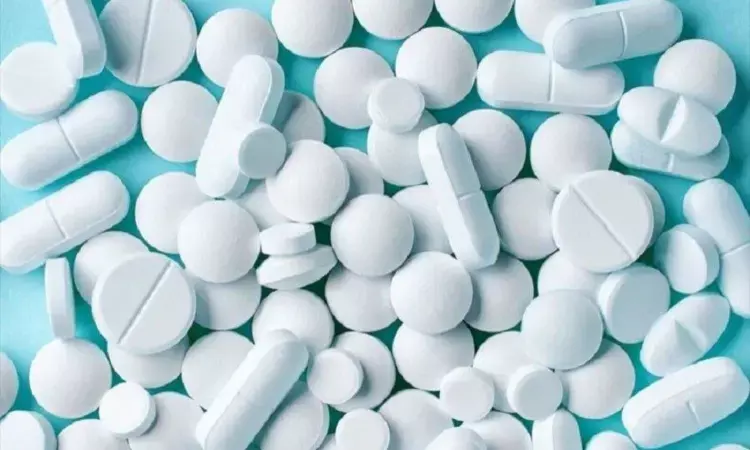- Home
- Medical news & Guidelines
- Anesthesiology
- Cardiology and CTVS
- Critical Care
- Dentistry
- Dermatology
- Diabetes and Endocrinology
- ENT
- Gastroenterology
- Medicine
- Nephrology
- Neurology
- Obstretics-Gynaecology
- Oncology
- Ophthalmology
- Orthopaedics
- Pediatrics-Neonatology
- Psychiatry
- Pulmonology
- Radiology
- Surgery
- Urology
- Laboratory Medicine
- Diet
- Nursing
- Paramedical
- Physiotherapy
- Health news
- Fact Check
- Bone Health Fact Check
- Brain Health Fact Check
- Cancer Related Fact Check
- Child Care Fact Check
- Dental and oral health fact check
- Diabetes and metabolic health fact check
- Diet and Nutrition Fact Check
- Eye and ENT Care Fact Check
- Fitness fact check
- Gut health fact check
- Heart health fact check
- Kidney health fact check
- Medical education fact check
- Men's health fact check
- Respiratory fact check
- Skin and hair care fact check
- Vaccine and Immunization fact check
- Women's health fact check
- AYUSH
- State News
- Andaman and Nicobar Islands
- Andhra Pradesh
- Arunachal Pradesh
- Assam
- Bihar
- Chandigarh
- Chattisgarh
- Dadra and Nagar Haveli
- Daman and Diu
- Delhi
- Goa
- Gujarat
- Haryana
- Himachal Pradesh
- Jammu & Kashmir
- Jharkhand
- Karnataka
- Kerala
- Ladakh
- Lakshadweep
- Madhya Pradesh
- Maharashtra
- Manipur
- Meghalaya
- Mizoram
- Nagaland
- Odisha
- Puducherry
- Punjab
- Rajasthan
- Sikkim
- Tamil Nadu
- Telangana
- Tripura
- Uttar Pradesh
- Uttrakhand
- West Bengal
- Medical Education
- Industry
Analgesic effect of exercise comparable to NSAIDs and paracetamol in knee osteoarthritis

Exercise is an effective treatment for osteoarthritis. It has been recommended as a core therapy by National Institution for Health and Care Excellence and other treatment guidelines for osteoarthritis because of its favourable safety profile.However, whether the analgesic effect of exercise is comparable to that of oral non-steroidal anti-inflammatory drugs (NSAIDs) and paracetamol, the most common analgesic given for osteoarthritis, remains unknown.
Researchers have found in a new study that analgesic effect of exercise comparable to NSAIDs and paracetamol in knee osteoarthritis.
The findings of the new study have been published in the British Journal of Sports Medicine.
Clinical guidelines recommend exercise as a core treatment for knee or hip osteoarthritis (OA). However, how its analgesic effect compares to analgesics, for example, oral non-steroidal anti-inflammatory drugs (NSAIDs) and paracetamol—the most commonly used analgesics for OA, remains unknown.
The Design of the study was Network meta-analysis. PubMed, Embase, Scopus, Cochrane Library and Web of Science sources from database inception to January 2022 were used. Eligibility criteria for selecting studies Randomised controlled trials (RCTs) comparing exercise therapy with oral NSAIDs and paracetamol directly or indirectly in knee or hip OA.
Results
A total of n=152 RCTs (17 431 participants) were included. For pain relief, there was no difference between exercise and oral NSAIDs and paracetamol at or nearest to 4, 8
Similarly, there was no difference between exercise and oral NSAIDs and paracetamol in functional improvement at or nearest to 4 , 8 and 24 weeks
Exercise has similar effects on pain and function to that of oral NSAIDs and paracetamol. Given its excellent safety profile, exercise should be given more prominence in clinical care, especially in older people with comorbidity or at higher risk of adverse events related to NSAIDs and paracetamol.
Reference:
Weng Q, Goh S, Wu J, et alComparative efficacy of exercise therapy and oral non-steroidal anti-inflammatory drugs and paracetamol for knee or hip osteoarthritis: a network meta-analysis of randomised controlled trialsBritish Journal of Sports Medicine Published Online First: 02 January 2023. doi: 10.1136/bjsports-2022-105898
Dr. Shravani Dali has completed her BDS from Pravara institute of medical sciences, loni. Following which she extensively worked in the healthcare sector for 2+ years. She has been actively involved in writing blogs in field of health and wellness. Currently she is pursuing her Masters of public health-health administration from Tata institute of social sciences. She can be contacted at editorial@medicaldialogues.in.
Dr Kamal Kant Kohli-MBBS, DTCD- a chest specialist with more than 30 years of practice and a flair for writing clinical articles, Dr Kamal Kant Kohli joined Medical Dialogues as a Chief Editor of Medical News. Besides writing articles, as an editor, he proofreads and verifies all the medical content published on Medical Dialogues including those coming from journals, studies,medical conferences,guidelines etc. Email: drkohli@medicaldialogues.in. Contact no. 011-43720751


